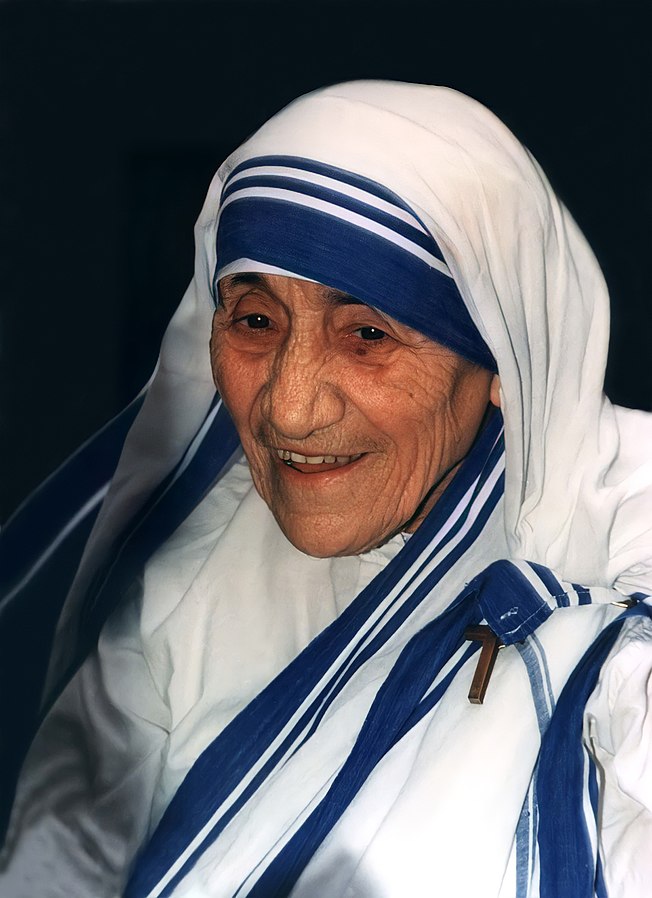

Mother Theresa
In January 1994, an Act of the Indian Parliament recognised the Kalakshetra Foundation as an 'Institute of National Importance'.Mother Teresa has been commemorated by museums and named the patroness of a number of churches. She has had buildings, roads and complexes named after her, including Albania's international airport. Mother Teresa Day (Dita e Nënë Terezës), 19 October, is a public holiday in Albania. In 2009, the Memorial House of Mother Teresa was opened in her hometown of Skopje, North Macedonia. The Cathedral of Blessed Mother Teresa in Pristina, Kosovo, is named in her honour.[163] The demolition of a historic high school building to make way for the new construction initially sparked controversy in the local community, but the high school was later relocated to a new, more spacious campus. Consecrated on 5 September 2017, it became the first cathedral in Mother Teresa's honour and the second extant one in Kosovo.[164] Cathedral of Saint Mother Teresa, Prishtinë Mother Teresa Women's University,[165] in Kodaikanal, was established in 1984 as a public university by the government of Tamil Nadu. The Mother Teresa Postgraduate and Research Institute of Health Sciences,[166] in Pondicherry, was established in 1999 by the government of Puducherry. The charitable organisation Sevalaya runs the Mother Teresa Girls Home, providing poor and orphaned girls near the underserved village of Kasuva in Tamil Nadu with free food, clothing, shelter and education.[167] A number of tributes by Mother Teresa's biographer, Navin Chawla, have appeared in Indian newspapers and magazines.[168][169][170] Indian Railways introduced the "Mother Express", a new train named after Mother Teresa, on 26 August 2010 to commemorate the centenary of her birth.[171] The Tamil Nadu government organised centenary celebrations honouring Mother Teresa on 4 December 2010 in Chennai, headed by chief minister M Karunanidhi.[172][173] Beginning on 5 September 2013, the anniversary of her death has been designated the International Day of Charity by the United Nations General Assembly.[174] In 2012, Mother Teresa was ranked number 5 in Outlook India's poll of the Greatest Indian.[175] Sacred Heart University in Fairfield, Connecticut, has a residence hall named after her, called Teresa of Calcutta Hall.
Recipients of Padma Shri in Social Work
Laureates of the Nobel Peace Prize
1979 Nobel Prize laureates
Templeton Prize laureates
Recipients of Bharat Ratna Award
Ramon Magsaysay Award winners of India
Pacem in Terris Peace and Freedom Award laureates
Superior General of the Missionaries of Charity
To find out more about Mother Theresa, visit https://en.wikipedia.org/wiki/Mother_Teresa